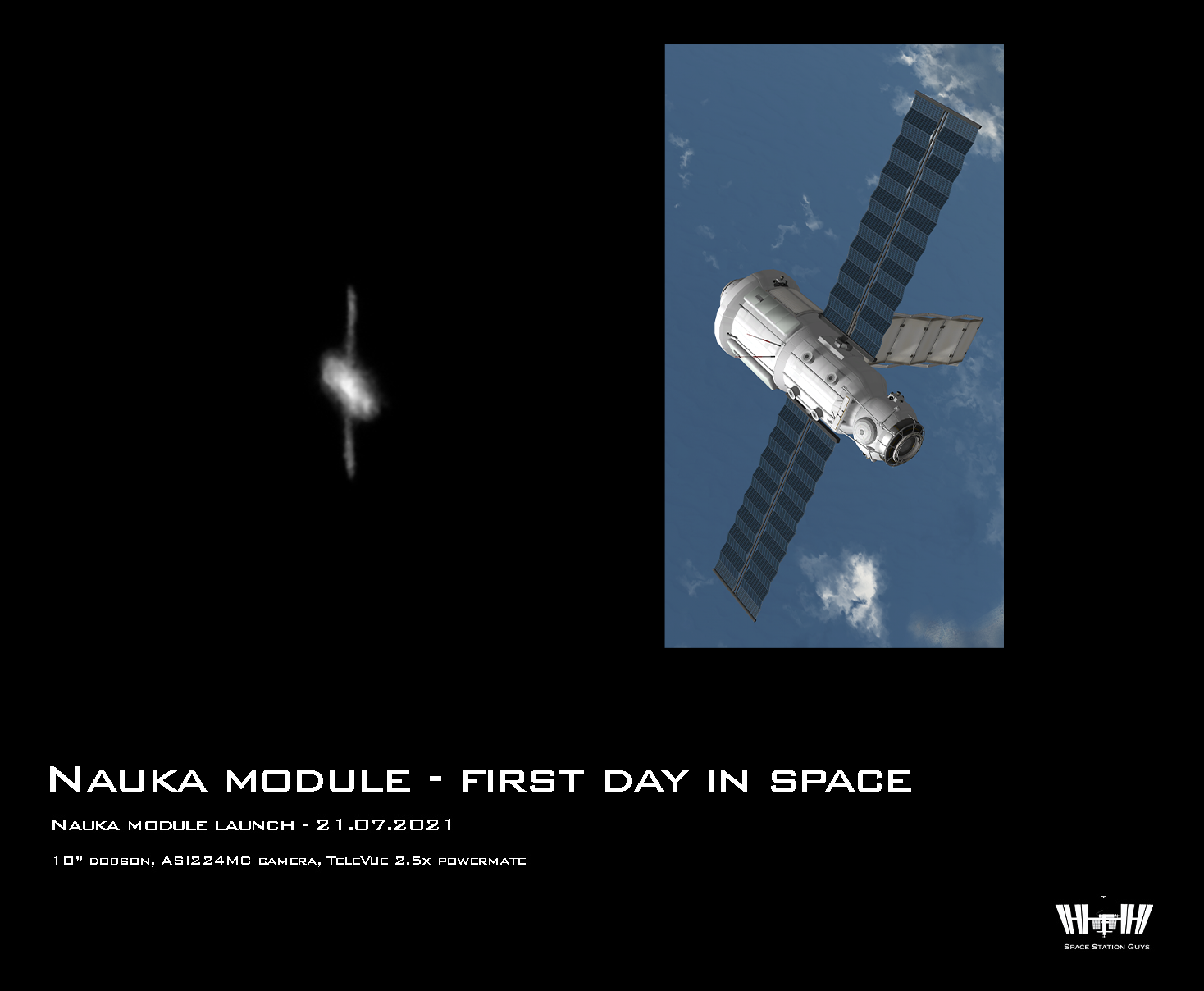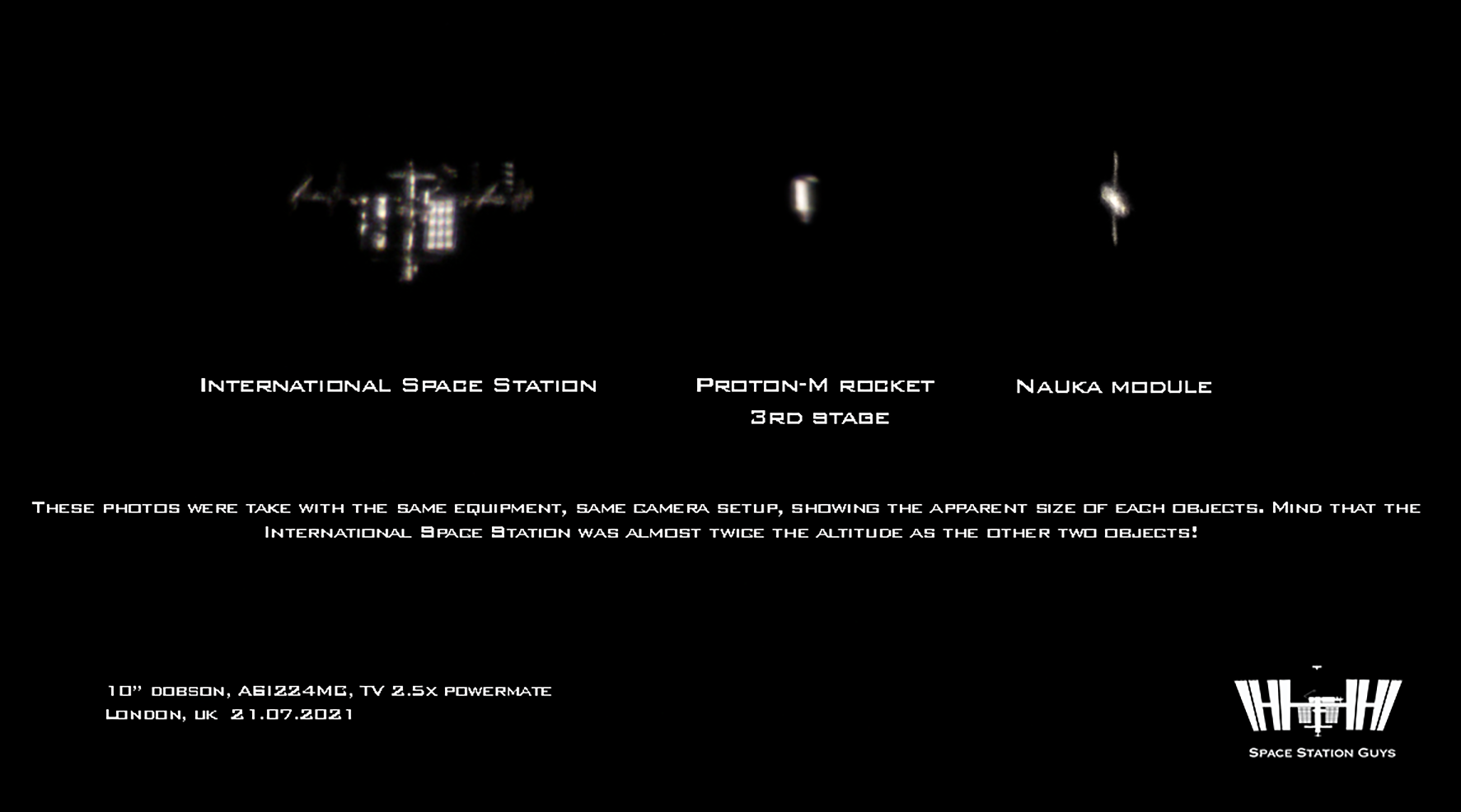Nauka science module launch to ISS
Nauka (Science) module was finally launched on the 21st July 2021 after a long long delay. From London I could very well observe the International (ISS) overhead passes at that time and since the module will follow the ISS, I knew this could be the perfect moment to capture images of the newly launched segment. Weather was amazingly clear with very calm atmospheric conditions.
I managed to observe and photograph Nauka module on launch day (21st July) only a few hours after take off and also the next day (22nd July) too. Below you can see both images and an animation made from the best frames taken on the second day (22nd July).
21st July 2021
Launch day was probably the hardest of all. Only guesses were circling on social media about where Nauka could be in relation to the International Space Station and when the flyby will occur from my location. Nauka was expected after the ISS flyby. After I finished imaging the ISS I looked west and I saw a very bright object travelling on a similar path to the ISS. I did the imaging, wow the object was travelling real fast. I knew immediately that this was it!
But then I looked up again and I saw an almost identical object to the one I just finished imaging. It was travelling the same direction and matching the brightness of the object appeared right after ISS. Started recording again, had less time because I could only start capturing it after the object passed zenith. Yes it was very confusing at first, but as soon as I opened the videos it all became clear what is what. The first object after the Space Station was the 3rd stage of the Proton-M rocket and then Nauka followed. When I opened the video and I saw the solar arrays I knew immediately that I just captured the new module at its closest to the observer.
22nd July 2021
Next day was somewhat easier, but most certainly not easy. I could prepare for Nauka module imaging slightly better and the outcome was slightly better too.
The animation I could put together was run through Topaz AI (by Bence Abelovszky). We regularly test my footages if it does any improvement without creating artifacts, fake details. Mostly it fails, luckily in this case it improved the details slightly.
Also I put together an animation which shows the International Space Station.
Finally this is a summary video from my Youtube channel, all observations from both days at one place.
Also what made me think since Nauka was launched is the orientation of the station. ISS looked somewhat different on my own videos, but taking a look at other photographer’s work the same weird orientation appeared. I did a bit of research on that and my conclusion is in this video above.




